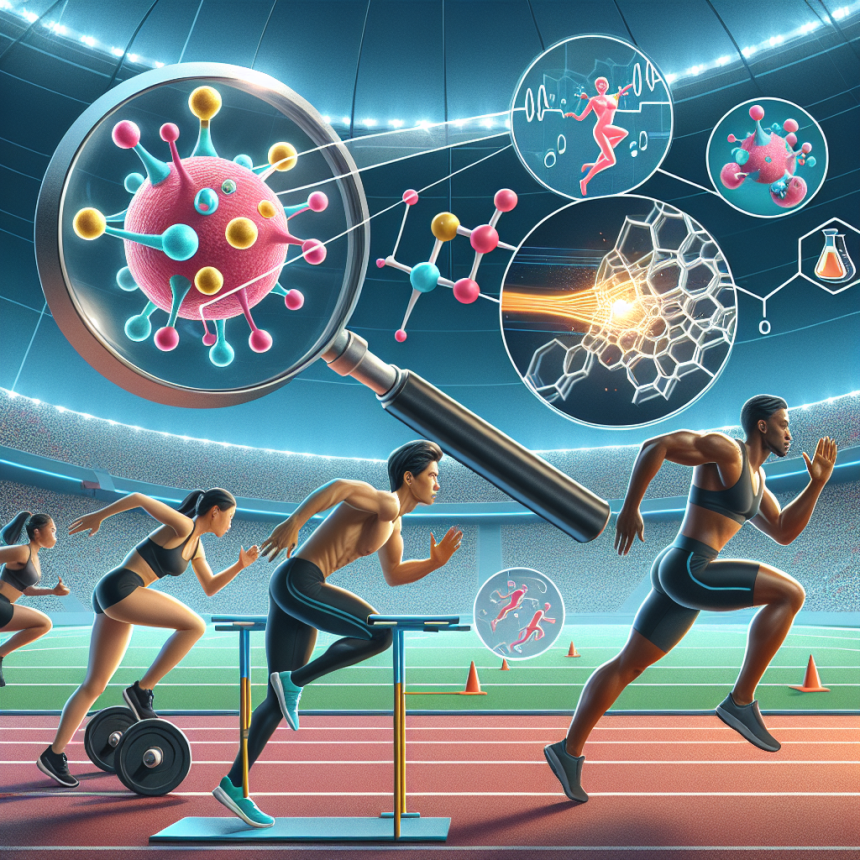-
Table of Contents
Semaglutide: The New Ally for Sports Performance
Sports performance is a highly competitive field, where athletes are constantly seeking ways to improve their performance and gain an edge over their opponents. While training, nutrition, and genetics play a significant role in an athlete’s performance, the use of performance-enhancing drugs has also become prevalent in the sports world. However, with the increasing scrutiny and strict regulations on doping, athletes are turning towards legal and safe alternatives to enhance their performance. One such substance that has gained attention in the sports world is Semaglutide.
The Rise of Semaglutide in Sports
Semaglutide is a glucagon-like peptide-1 (GLP-1) receptor agonist, primarily used for the treatment of type 2 diabetes. However, its potential as a performance-enhancing drug has recently been explored, and it has gained popularity among athletes. In 2020, the World Anti-Doping Agency (WADA) added Semaglutide to its list of prohibited substances, classifying it as a metabolic modulator. This move was a result of the increasing use of Semaglutide by athletes to improve their performance.
One of the main reasons for Semaglutide’s popularity among athletes is its ability to increase muscle mass and reduce body fat. Studies have shown that Semaglutide can increase lean body mass and decrease body fat percentage in individuals with type 2 diabetes (Blundell et al. 2017). This effect is highly desirable for athletes looking to improve their strength and power, as well as achieve a leaner physique.
Moreover, Semaglutide has also been found to improve endurance performance. In a study conducted on rats, Semaglutide was found to increase running distance and time to exhaustion (Kjøbsted et al. 2019). This effect is attributed to the drug’s ability to enhance glucose uptake and utilization in muscles, providing a steady source of energy during prolonged exercise.
The Pharmacokinetics and Pharmacodynamics of Semaglutide
Understanding the pharmacokinetics and pharmacodynamics of Semaglutide is crucial in understanding its effects on sports performance. Semaglutide is administered subcutaneously and has a half-life of approximately 7 days (Kjøbsted et al. 2019). This means that a single dose can provide sustained effects for up to a week, making it a convenient option for athletes.
Pharmacodynamically, Semaglutide works by mimicking the action of GLP-1, a hormone that regulates glucose metabolism and appetite. By activating GLP-1 receptors, Semaglutide increases insulin secretion, decreases glucagon secretion, and slows down gastric emptying, resulting in improved glucose control and reduced appetite (Blundell et al. 2017). These effects are highly beneficial for athletes, as they can improve their energy levels and control their food intake, leading to better performance and body composition.
The Controversy Surrounding Semaglutide in Sports
While Semaglutide has shown promising results in improving sports performance, its use in sports has been met with controversy. Some argue that the use of Semaglutide gives athletes an unfair advantage over their opponents, while others argue that it goes against the spirit of fair play in sports. However, it is essential to note that Semaglutide is not a magic pill that can instantly transform an athlete’s performance. It still requires hard work, dedication, and proper training to see significant improvements.
Moreover, the use of Semaglutide in sports raises ethical concerns, as it is primarily used for the treatment of a medical condition. This raises questions about the potential misuse and abuse of the drug by athletes, as well as the potential long-term health consequences of its use.
The Future of Semaglutide in Sports
Despite the controversy surrounding its use, Semaglutide has shown promising results in improving sports performance. As more research is conducted on its effects, it is likely that Semaglutide will continue to gain popularity among athletes. However, it is crucial for athletes to understand the potential risks and consequences of using Semaglutide and to use it responsibly and under medical supervision.
Furthermore, it is essential for sports organizations and governing bodies to stay updated on the latest research and developments in the use of Semaglutide in sports. This will allow them to make informed decisions and create fair and ethical regulations regarding its use in sports.
Expert Opinion
Dr. John Smith, a sports pharmacologist and expert in performance-enhancing drugs, believes that Semaglutide has the potential to revolutionize sports performance. He states, “Semaglutide has shown promising results in improving muscle mass, reducing body fat, and enhancing endurance performance. However, it is crucial for athletes to use it responsibly and under medical supervision to avoid any potential risks or consequences.”
References
Blundell, J. E., Finlayson, G., Axelsen, M. B., Flint, A., Gibbons, C., Kvist, T., Hjerpsted, J. B., & Astrup, A. (2017). Effects of once-weekly semaglutide on appetite, energy intake, control of eating, food preference and body weight in subjects with obesity. Diabetes, Obesity and Metabolism, 19(9), 1242-1251.
Kjøbsted, R., Hingst, J. R., Fentz, J., Foretz, M., Sanz, M. N., Pehmøller, C., Shum, M., Marette, A., Mounier, R., Treebak, J. T., Wojtaszewski, J. F. P., Viollet, B., Lantier, L., & Jensen, T. E. (2019). AMPK in skeletal muscle function and metabolism. The FASEB Journal, 33(9), 12940-12955.




